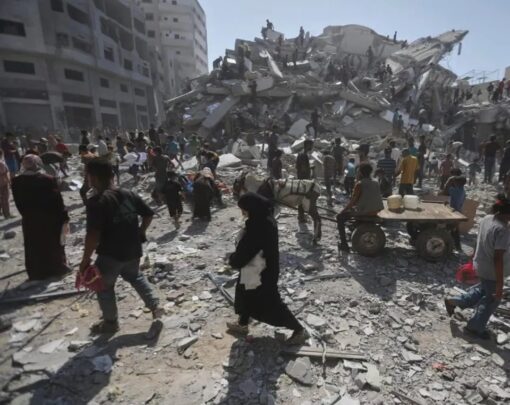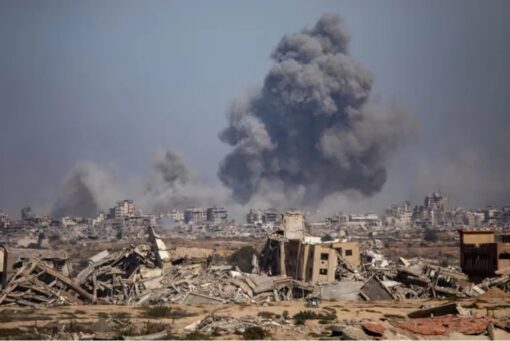The unveiling of the Trump Peace Plan in Gaza has once again brought the world’s attention to the bloody stalemate between Israel and Hamas. Promoted as a comprehensive initiative to end violence, free Israeli hostages, and rebuild shattered lives in Gaza, the plan has sparked both cautious optimism and deep skepticism.
Its success rests on conditions that have long been sticking points in Middle East diplomacy—none more controversial than the demand for Hamas to disarm.
Unveiled late last week, the plan introduces a 20-point framework designed to stabilize Gaza after two years of devastating war. It proposes the release of Israeli hostages within 72 hours, a withdrawal of Israeli troops to a designated buffer zone, and the opening of humanitarian corridors into the enclave.
In return, Hamas must disarm and relinquish control to international administration—terms that strike at the heart of the group’s identity.
Hamas Resistance and the Disarmament Dilemma
For Hamas, weapons are more than tools of war; they represent political leverage and the core of its ideology. Founded in the late 1980s as a movement of armed resistance, Hamas sees disarmament as an existential threat.
Leaders argue that without weapons, the movement would lose negotiating power and expose Gaza’s population to renewed vulnerability.

While some Hamas officials in Doha and Istanbul hint at pragmatism, the movement’s military wing inside Gaza remains defiant. They view the Trump Peace Plan in Gaza as skewed toward Israel’s interests and see surrendering arms as unacceptable.
The division between political and military wings, though sometimes overstated, reflects the group’s enduring belief in armed struggle.
Israel’s Embrace of the Plan
Israel’s prime minister has already endorsed the initiative, calling it a path to long-term security. The plan satisfies many of Israel’s long-standing demands, including Hamas’s disarmament and the dismantling of its military infrastructure.
Yet for Palestinians, the imbalance is glaring. The proposal sidesteps the issue of sovereignty and Palestinian statehood while consolidating Israel’s security priorities.
For many in Gaza, this underscores the perception that the Trump Peace Plan in Gaza was drafted without Palestinian voices at the negotiating table.
The Human Cost of War
Any discussion of peace cannot ignore the staggering human toll. More than 66,000 Palestinians have been killed in Israeli strikes over the past two years.
Gaza’s infrastructure lies in ruins—hospitals destroyed, schools reduced to rubble, and entire neighborhoods erased. Millions remain displaced, forced to move repeatedly under bombardment.

Israel also bears deep scars. Over a thousand civilians were killed in Hamas’s initial assault, and hostages remain unaccounted for. These wounds shape the entrenched mistrust that shadows any effort toward compromise.
For Gazans, calls to disarm feel not only unrealistic but insulting given the immense suffering endured.
International Pressure and Mediation
Turkey and Qatar have urged Hamas to approach the deal with flexibility, warning that outright rejection could justify harsher Israeli retaliation.
Still, even these allies admit persuading Hamas to completely disarm is nearly impossible. Instead, they advocate incremental steps—a phased reduction of arms linked to prisoner releases, political concessions, and assurances against future Israeli occupation.
The Trump Peace Plan in Gaza does attempt to offer symbolic victories for Palestinians. Chief among them is Israel’s pledge to release more than 1,000 prisoners, many serving life sentences.
Hamas could frame this as a major achievement to its base. Yet this gesture is overshadowed by the prospect of losing authority in Gaza under international administration—a move Hamas views as stripping it of legitimacy after nearly two decades of rule.
Skepticism on Both Sides
Doubt also lingers within Israel. While officials back the plan, many citizens recall failed ceasefires that collapsed within weeks.
Hardliners argue Hamas will never truly disarm, citing its ability to regroup after devastating losses. Israeli intelligence estimates suggest that despite heavy blows, Hamas still retains parts of its tunnel network and maintains recruitment pipelines.
For Hamas’s younger militants, the plan looks like surrender. They believe Israel faces strategic weakness—from political turmoil to growing international criticism—and see time as being on their side. The urgency of the plan’s deadlines clashes with their conviction that armed resistance remains viable.
A Gamble Rooted in History
At its core, the Trump Peace Plan in Gaza is a gamble. It assumes that exhaustion, devastation, and external pressure will push Hamas toward pragmatism, while Israel, under international scrutiny, will honor its commitments.
But history casts doubt. From the Oslo Accords to repeated ceasefires, agreements have repeatedly collapsed under mistrust, unilateral actions, and unmet promises.
Still, some argue that even an imperfect plan is better than unending bloodshed. Humanitarian organizations emphasize that the deal could enable large-scale aid deliveries, hospital rebuilding, and resettlement programs. For Gaza’s displaced families, doctors without supplies, and children searching for shelter, even a fragile pause could mean survival.
The Road Ahead
Hamas is expected to deliver its official response in the coming days. Insiders suggest it may issue a conditional acceptance—agreeing to the broad framework but demanding revisions on disarmament, governance, and sovereignty guarantees. Whether Washington and Israel accept such conditions remains uncertain.
Ultimately, the Trump Peace Plan in Gaza exposes the paradox of modern peacemaking: even when both sides are desperate for relief, mistrust often outweighs necessity.
Peace cannot be imposed without addressing deeper grievances of justice, identity, and political legitimacy.
For now, Gaza’s ruins and Israel’s scars stand as stark reminders of the urgency of compromise. Whether this plan becomes a breakthrough or another entry in the long history of failed peace efforts depends less on documents and deadlines, and more on whether hardened enemies can imagine a future where war is no longer their only language.
More news here


